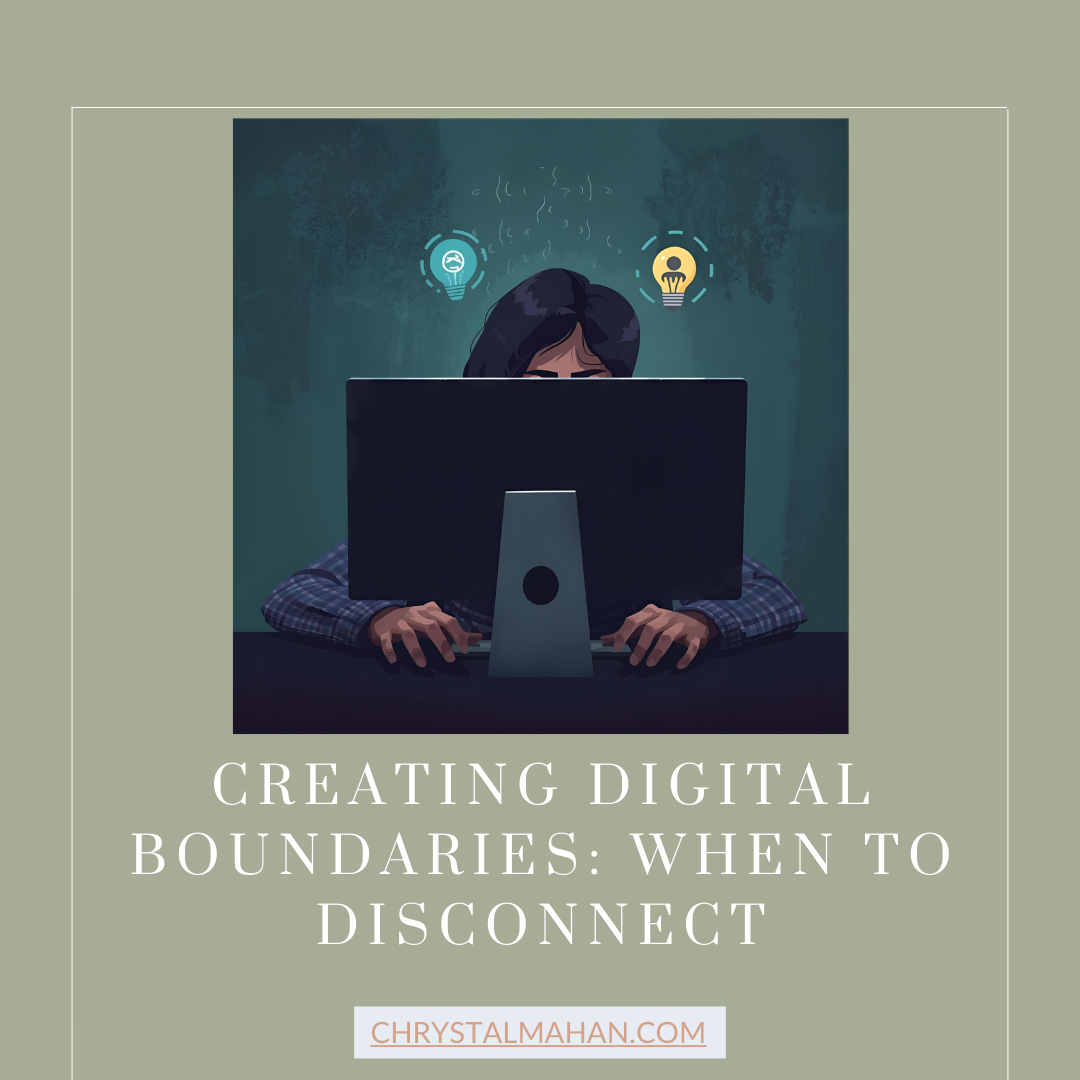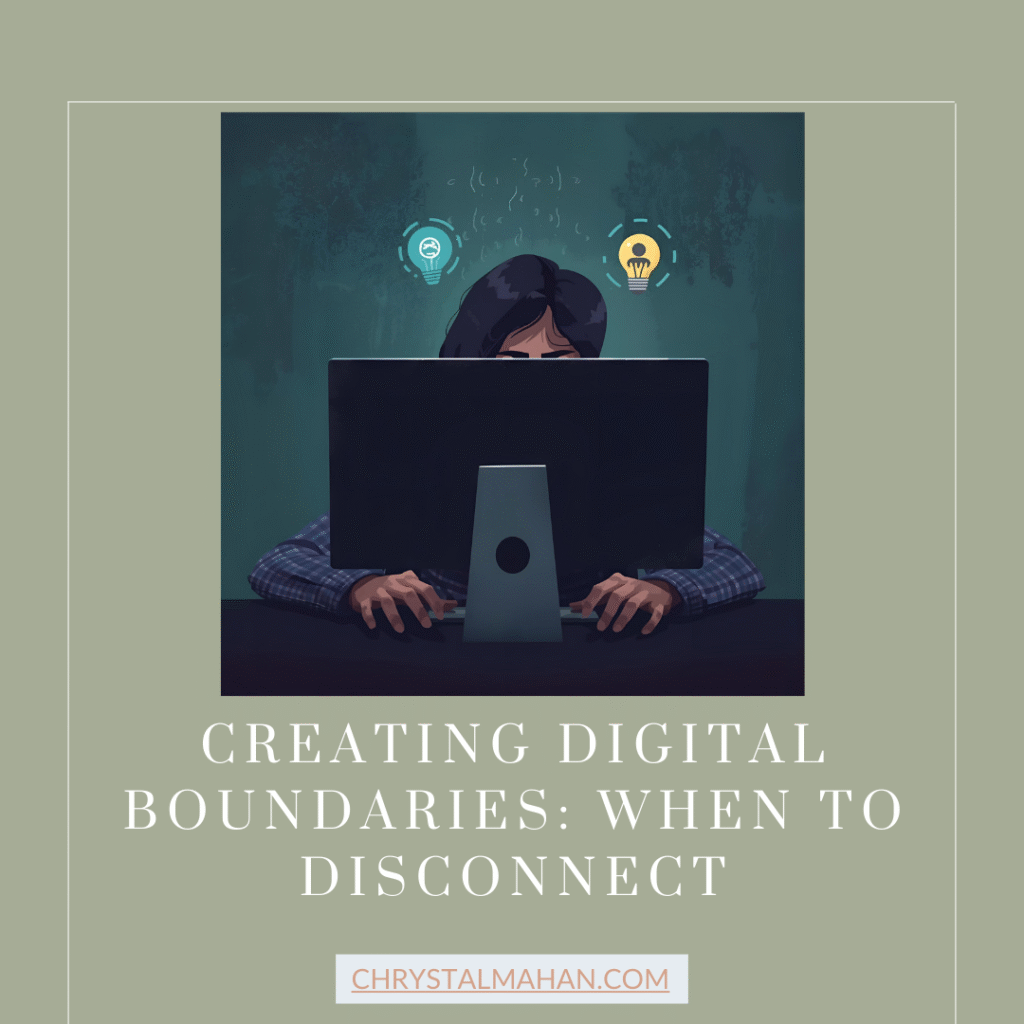Creating Digital Boundaries: When to Disconnect


The average person checks their phone 96 times per day. That notification sound has become the modern equivalent of Pavlov’s bell, triggering an instant response that pulls us away from whatever we were doing. Whether it’s a work email at 9 PM, a social media notification during family dinner, or the compulsive urge to scroll through news feeds before bed, our devices have infiltrated every corner of our lives.
A successful entrepreneur recently shared how she discovered her phone usage had crept up to nearly eight hours daily. Despite running a thriving business and maintaining strong relationships, she felt constantly scattered, anxious, and unable to focus deeply on any single task. Her breaking point came during a family vacation when she realized she had spent more time photographing moments than actually experiencing them. The realization hit hard: technology designed to connect and enhance her life had become a barrier to genuine presence and meaningful engagement.
The solution isn’t to abandon technology entirely, but rather to establish intentional digital boundaries that serve your goals and values. When you create clear limits around when, where, and how you engage with digital devices, you reclaim control over your attention, reduce stress, and create space for the activities and relationships that truly matter. This approach transforms technology from a master that demands constant attention into a tool that enhances rather than detracts from your quality of life.
Why Digital Boundaries Matter More Than Ever
The human brain wasn’t designed to handle the constant stream of information and stimulation that modern technology provides. Every notification triggers a small release of dopamine, creating a feedback loop that makes it increasingly difficult to resist the pull of our devices. This constant connectivity has rewired our neural pathways, making sustained attention and deep thinking more challenging than ever before.
Research consistently shows that excessive screen time correlates with increased anxiety, depression, and sleep disorders. The blue light emitted by screens disrupts our natural circadian rhythms, while the constant mental switching between tasks fragments our cognitive resources. Many professionals report feeling mentally exhausted despite not engaging in physically demanding work, largely due to the cognitive load of managing multiple digital inputs throughout the day.
Beyond individual health impacts, uncontrolled digital consumption affects our relationships and productivity. The mere presence of a smartphone reduces cognitive performance, even when it’s turned off. Families struggle to connect meaningfully when devices compete for attention during meals and conversations. The workplace suffers as employees toggle between an average of 9.5 applications daily, leading to decreased efficiency and increased errors.
Recognizing the Signs You Need Digital Boundaries
Physical symptoms often provide the first clues that your digital consumption has become problematic. Eye strain, headaches, neck pain, and disrupted sleep patterns frequently indicate excessive screen exposure. Many people develop “text neck” from constantly looking down at devices, while others experience digital eye strain that manifests as dryness, blurred vision, and sensitivity to light.
Emotional and mental indicators can be more subtle but equally important. If you feel anxious when separated from your phone, compulsively check devices even when no notifications are present, or struggle to enjoy activities without documenting them digitally, these patterns suggest an unhealthy relationship with technology. The inability to sit quietly without reaching for entertainment or distraction has become increasingly common, indicating a diminished capacity for introspection and mindfulness.
Productivity and relationship warning signs include difficulty completing tasks without interruption, decreased quality of face to face interactions, and a sense that time passes quickly without meaningful accomplishment. When digital activities consistently interfere with sleep, exercise, work responsibilities, or personal relationships, it’s time to establish clearer boundaries. The goal isn’t perfection but rather awareness of when technology enhances versus detracts from your intended outcomes.
Practical Strategies for Setting Digital Boundaries
Creating effective digital boundaries starts with designating specific times and spaces as device free zones. Begin by establishing a morning routine that doesn’t immediately involve checking email or social media. This might mean keeping your phone in another room overnight and using a traditional alarm clock, allowing you to start each day with intention rather than reaction to external demands.
Implement the “phone parking” strategy during important activities like meals, conversations, and focused work sessions. Physically removing devices from your immediate environment reduces the temptation to multitask and improves the quality of your engagement. Many families find success with a central charging station where all devices rest during dinner, creating natural opportunities for connection and conversation.
Time based boundaries prove particularly effective for managing work related digital communication. Establish clear start and stop times for checking email, and communicate these boundaries to colleagues and clients. Consider using auto responders that set expectations about response times, particularly for non urgent matters. This approach protects your personal time while maintaining professional relationships and ensuring important communications receive appropriate attention.
Creating Sustainable Digital Wellness Habits
Sustainable digital boundaries require replacing compulsive device usage with intentional alternatives. When you feel the urge to scroll through social media, have a predetermined alternative ready such as taking a brief walk, practicing deep breathing, or engaging in a quick creative activity. This substitution approach acknowledges the underlying need for stimulation or break while directing it toward more beneficial activities.
Develop a digital sunset routine that gradually reduces screen exposure in the hours before bedtime. This might involve switching to analog activities like reading physical books, journaling, or gentle stretching. The key is creating a transition period that allows your mind to shift from the stimulating effects of digital media to a more restful state conducive to quality sleep.
Regular digital detoxes, even brief ones, help reset your relationship with technology and increase awareness of unconscious usage patterns. Start with short periods such as device free Saturday mornings or weekday lunch breaks without screens. These breaks often reveal how frequently we reach for devices out of habit rather than genuine need, providing valuable insights into areas where boundaries would be most beneficial.
Balancing Connection and Disconnection in Professional Life
Professional digital boundaries require clear communication and strategic planning to maintain both productivity and relationships. Begin by categorizing communications based on urgency and importance, establishing different response time expectations for each category. True emergencies rarely arrive via email, so most professional communications can wait for designated checking periods without negative consequences.
Create physical and temporal separation between work and personal digital spaces whenever possible. This might involve using separate devices or accounts for different purposes, or establishing specific hours when work related digital communication is off limits. Remote workers particularly benefit from creating rituals that mark the transition between professional and personal time, preventing work from bleeding into all hours of the day.
Collaborate with colleagues and supervisors to establish team wide digital communication norms that respect everyone’s boundaries while maintaining operational efficiency. This might include guidelines about after hours communication, response time expectations, and preferred channels for different types of information. When teams collectively commit to healthy digital practices, individual boundary setting becomes easier and more sustainable.
Your Path to Digital Freedom Starts Now
The journey toward healthier digital boundaries isn’t about perfection or completely eliminating technology from your life. Instead, it’s about developing the awareness and skills to use technology intentionally, ensuring it serves your goals rather than controlling your behavior. Every small step toward more mindful digital consumption creates positive ripple effects in your productivity, relationships, and overall wellbeing.
Start with one simple boundary today, whether it’s keeping your phone out of the bedroom, designating device free meal times, or setting specific hours for checking email. Notice how this change affects your mood, focus, and interactions with others. These observations will guide you toward additional boundaries that support your unique lifestyle and goals.
Remember that creating sustainable digital boundaries is an ongoing process that requires regular adjustment as technology and life circumstances evolve. Be patient with yourself as you develop new habits, and celebrate the small victories along the way. The goal is progress, not perfection, and every step toward more intentional technology use brings you closer to a more balanced and fulfilling life.
Ready to explore more strategies for optimizing your digital wellness and productivity? Browse our collection of practical guides and insights designed to help you thrive in our connected world. And if you’re looking for personalized support in creating boundaries that work for your unique situation, I’d love to connect over coffee and discuss how we can transform your relationship with technology together.





